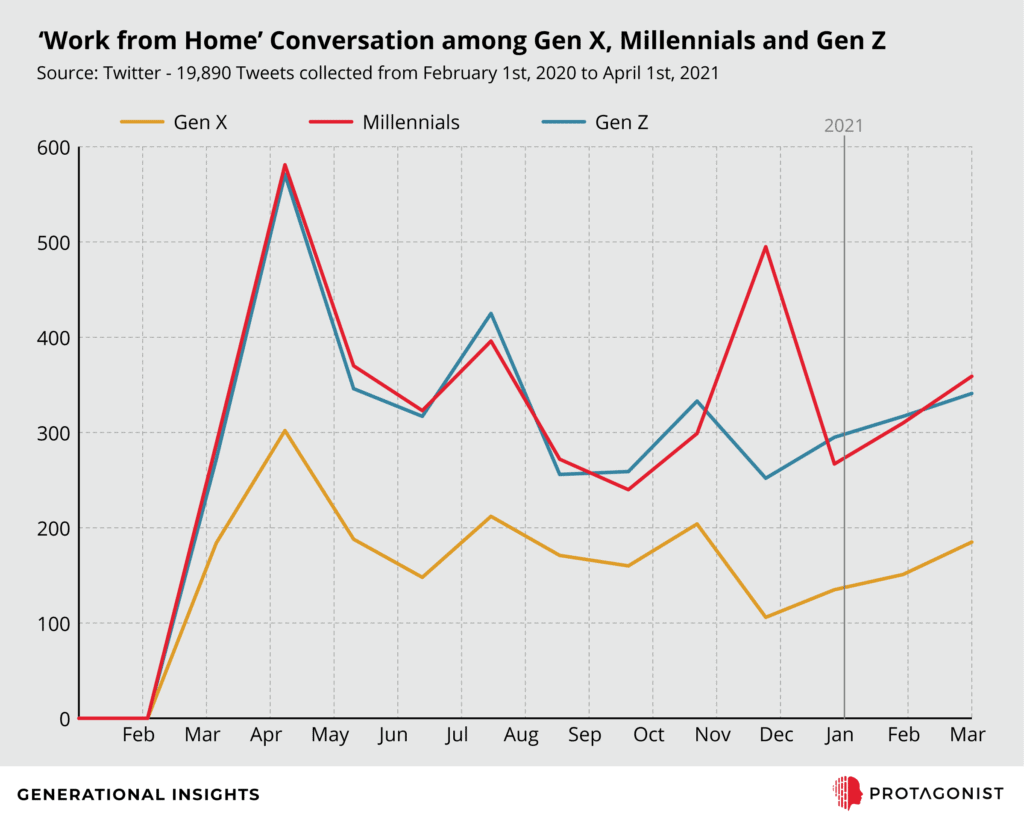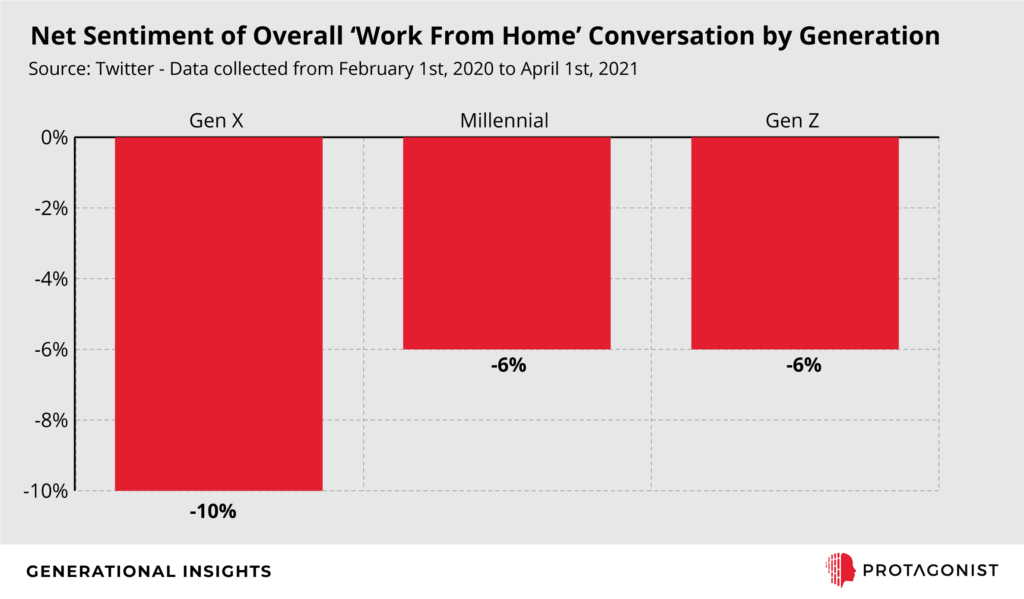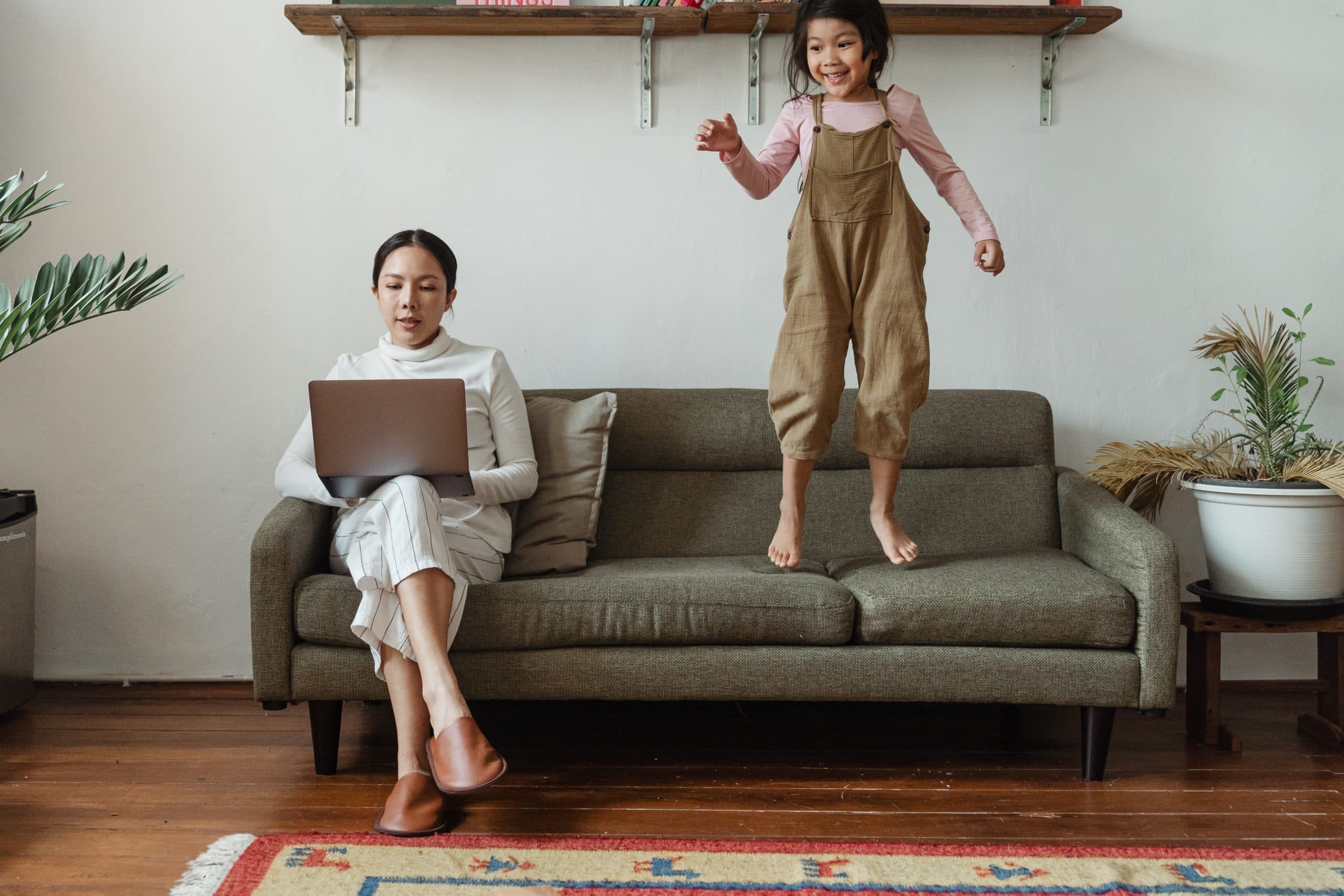As many of us are confronted with the milestone of spending a year in shelter-in-place, we also confront the anniversary of changing how we work. Essential workers faced new challenges navigating through their day-to-day experiences at workplaces, while others adapted to a work from home (WFH) situation. With more companies considering a permanently remote work force and others choosing hybrid work situations, we wondered how the conversation about WFH has changed in the past year, and how attitudes differ based on age.
Though each generation, from Gen X to Gen Z, is at a different career stage, the pandemic disrupted work for everyone. The following graph looks at the overall volume of the conversation among Gen X, Millennials and Gen Z. As the pandemic started, and shelter-in-place took hold, there was an initial spike in conversation about WFH. It didn’t end with that initial adjustment, though—this conversation remained active throughout 2020, especially among the younger generations.

Each of the generations highlighted some of the advantages of working from home. Overall, though, as the following graph shows, the WFH conversation was more negative than positive for all generations.

Some of the complaints about WFH crossed generational lines. For instance, the idea of inequity—unfairness about who is able to work from home and who isn’t—was a consistent theme throughout the year for all generations. And there were significant differences. Gen Z focused more on the impact of WFH on mental health, while Millennials and Gen X lamented the inability to separate work from the rest of life, and especially how work was winning out when they tried to balance it with family and non-work activity.
As the country emerges from the pandemic, employees and employers will be exploring new longer-term WFH and hybrid working models. How will attitudes toward WFH change as it becomes more of a choice and less of a pandemic-driven requirement? And how will those attitudes differ and evolve among different populations? We’ll be fascinated to find out as we continue to monitor this conversation.

